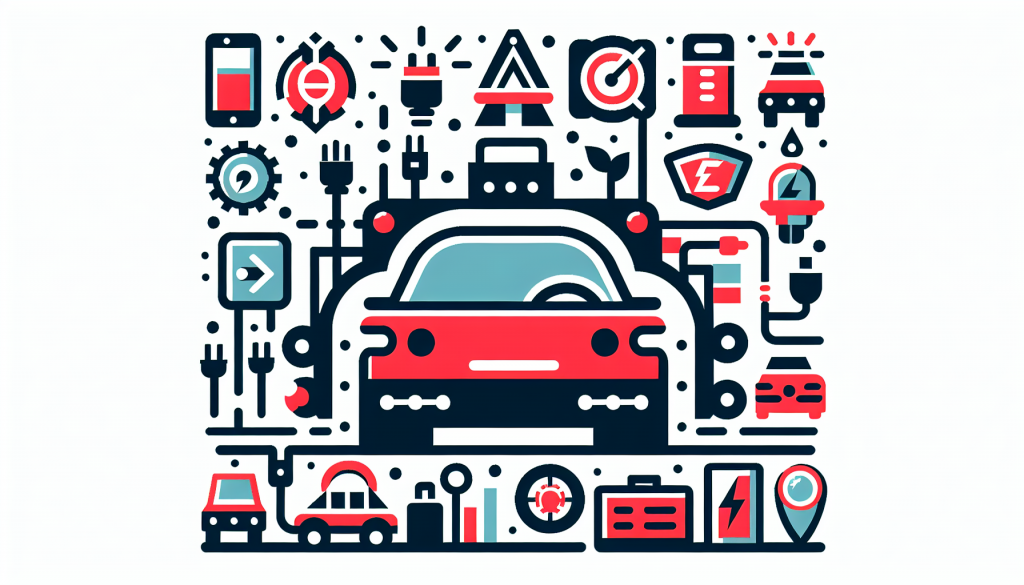Common EV and Hybrid Warning Lights
Understanding the dashboard lights and warning symbols in electric and hybrid vehicles is crucial for maintaining their optimal performance. These lights serve as important indicators of the vehicle’s health and can alert owners to potential issues that need addressing.
Understanding Dashboard Lights
Dashboard lights in electric and hybrid vehicles are designed to communicate vital information about the vehicle’s systems. These lights are often color-coded to signify the severity of the issue:
- Green/Blue Lights: Indicate that a system is operating normally or is active.
- Yellow/Amber Lights: Signal that something requires attention soon but is not an immediate danger.
- Red Lights: Warn of a serious issue that needs urgent attention.
For more details on specific lights, visit our comprehensive guide on ev warning lights dashboard.
Interpretation of Warning Symbols
Interpreting warning symbols correctly can help in diagnosing and resolving issues promptly. Below is a table of common warning lights and their meanings in electric and hybrid vehicles.
| Icon | Warning Light | Description | Action Required |
|---|---|---|---|
| Battery Warning | Indicates an issue with the battery or charging system. | Check the battery and charging system. Seek professional help if the light stays on. | |
| Brake System Warning | Signals a problem with the braking system. | Inspect the brake fluid level and brake pads. Do not drive if the issue persists. | |
| Check Engine Light | Indicates a problem with the engine or emissions system. | Use an ev warning lights code reader to diagnose the issue. | |
| Coolant Temperature Warning | Shows that the engine is overheating. | Check the coolant level and radiator. Allow the engine to cool before driving. | |
| Tire Pressure Warning | Indicates low tire pressure. | Check and inflate the tires to the recommended pressure level. |
For a deeper understanding of these symbols, visit our article on ev warning lights meanings.
By familiarizing themselves with these common warning lights and their meanings, EV and hybrid vehicle owners can take proactive steps to address potential issues and maintain their vehicle’s performance. For further troubleshooting and solutions, check out our section on ev warning lights troubleshooting.
Troubleshooting Solutions
When dealing with EV and hybrid vehicle warning lights, it’s crucial to address the underlying triggers and resolve any drivability issues that may arise. This section will provide solutions for common light triggers and ways to resolve drivability concerns.
Addressing Common Light Triggers
Understanding and addressing the common triggers for warning lights can prevent more serious issues from developing. Here are some typical triggers and their corresponding solutions:
Battery Charge Warning
The battery charge warning light indicates that the battery level is critically low.
- Solution: Charge your vehicle as soon as possible. Regularly monitor your battery level to avoid reaching critical levels.
Brake System Warning
This light signifies an issue with the braking system, which can be due to low brake fluid, worn brake pads, or a malfunctioning brake system.
- Solution: Check the brake fluid level and top it up if necessary. If the light persists, have the brake system inspected by a professional to ensure safe operation.
Tire Pressure Warning
The tire pressure warning light indicates that one or more tires have low pressure.
- Solution: Check the tire pressure and inflate to the recommended levels. Regularly monitor tire pressure to ensure optimal performance and safety.
Resolving Drivability Issues
Drivability issues can stem from various sources, often indicated by specific warning lights. Here are some common issues and their solutions:
Motor Power Reduction
If the warning light indicates a reduction in motor power, it can affect the vehicle’s acceleration and overall performance.
- Solution: Reduce your speed and avoid heavy acceleration. Check for any software updates for your vehicle and have it inspected to identify the cause of the power reduction.
Transmission Malfunction
A transmission warning light can indicate issues with the vehicle’s transmission system, leading to drivability problems.
- Solution: Avoid driving the vehicle if possible. Have the transmission system checked and repaired by a certified technician.
Cooling System Alert
The cooling system warning light signifies that the vehicle’s cooling system is not functioning properly, which can lead to overheating.
- Solution: Check the coolant level and top it up if necessary. If the problem persists, have the cooling system inspected to prevent overheating.
| Issue | Possible Trigger | Solution |
|---|---|---|
| Battery Charge Warning | Low battery level | Charge the vehicle immediately. |
| Brake System Warning | Low brake fluid, worn pads | Check brake fluid and pads, seek professional inspection if needed. |
| Tire Pressure Warning | Low tire pressure | Inflate tires to recommended levels. |
| Motor Power Reduction | Software or mechanical issue | Reduce speed, check for updates, professional inspection required. |
| Transmission Malfunction | Transmission issue | Avoid driving, seek professional repair. |
| Cooling System Alert | Low coolant level | Check and top up coolant, seek professional inspection if problem persists. |
For further details on interpreting and addressing warning lights, visit our comprehensive ev warning lights guide and hybrid vehicle warning lights solutions. To diagnose specific issues, consider using an ev warning lights code reader or a hybrid vehicle warning lights scanner.



